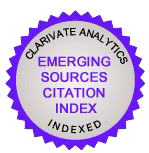Роман Ф.М. Достоевского «Преступление и наказание»: комментирование и комментарии
Palabras clave:
F.M. Dostoevsky, «The Crime and Punishment», history of commenting, typology of commentariesResumen
The present article presents the history and theory of commenting novel «The Crime and punishment» by F. Dostoevsky, characterizes commentaries to this novel from typological and functional points of view; reveals correlation of analysis procedures, interpretation and commentary itself, efficiency of their combination with specific references from the works of the writer’s scholars in the XX-XXI centuries; identifies representation peculiarities of «old» and «new» editions of his works with essentially different types of commentator’s explanations. On the one hand, it is an academic publication of the Soviet period, on the other hand, a unique book by G.A. Meyer «Light at night» and commentaries by prominent Russian Dostoevsky scholars, including the outstanding work by B.N. Tikhomirov remarkable by the precision of textual, realistic-historical, biographic, and intertextual commentary. The article also notes transition to the new, in comparison with the Soviet methodology, principles of commenting that led to indicative «revival» of the exegetical approach to «The Crime and punishment» novel interpretation in T.A. Kasatkina works; for example, it is concluded that modern interest in the interpretative type of commentaries, as the way of text understanding and assumption, often leads to its appropriation; in this regard, it emphasizes prospectivity of «synthetic» commentary, which allows preserving balance of «conceptual» interpretations and textual particularities, as it is evidenced by the author’s experience of commenting on the epilogue of « The Crime and punishment». As a result, it in some degree problematisizes the issue of absolute «resurrection» of Raskolnikov in the open end of Dostoevsky’s novel.Descargas
Descargas
Publicado
Cómo citar
Número
Sección
Licencia
Los autores conservan los derechos de autor sobre sus trabajos y garantizan a la revista el derecho de ser la primera publicación del mismo. Los artículos se publican bajo la licencia Creative Commons Atribución-NoComercial 4.0 Internacional (CC BY-NC-SA 4.0), lo que permite a los lectores y otros investigadores copiar, redistribuir, remezclar, transformar y construir a partir del material, siempre que se respeten las condiciones establecidas.












